DIY Tour -The Ultimate Historic Intramuros Tour in Manila – Top Sights, Insider Tips for Homeschoolers
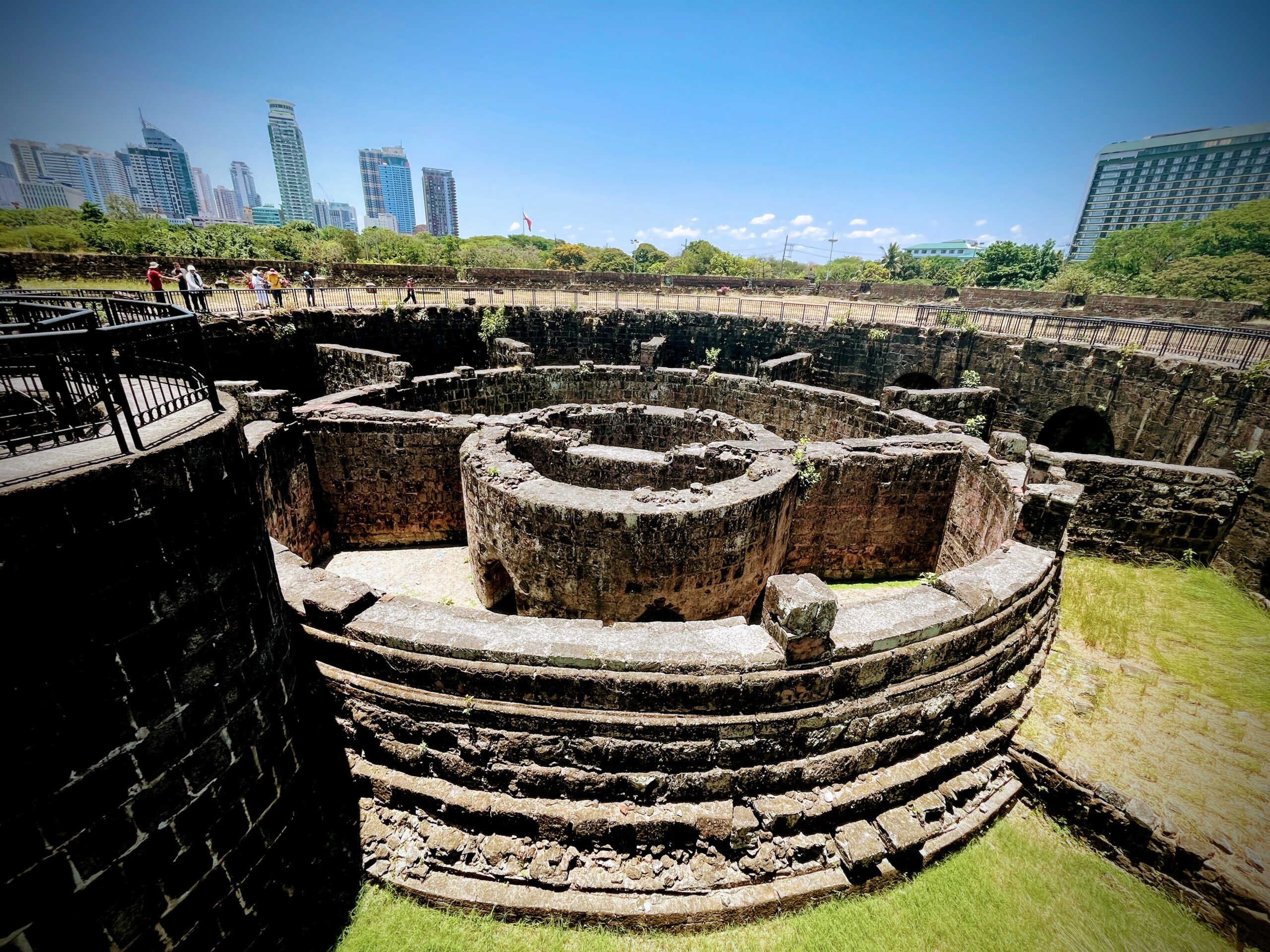
Exploring the Historic Heart of Manila on Your Own Terms
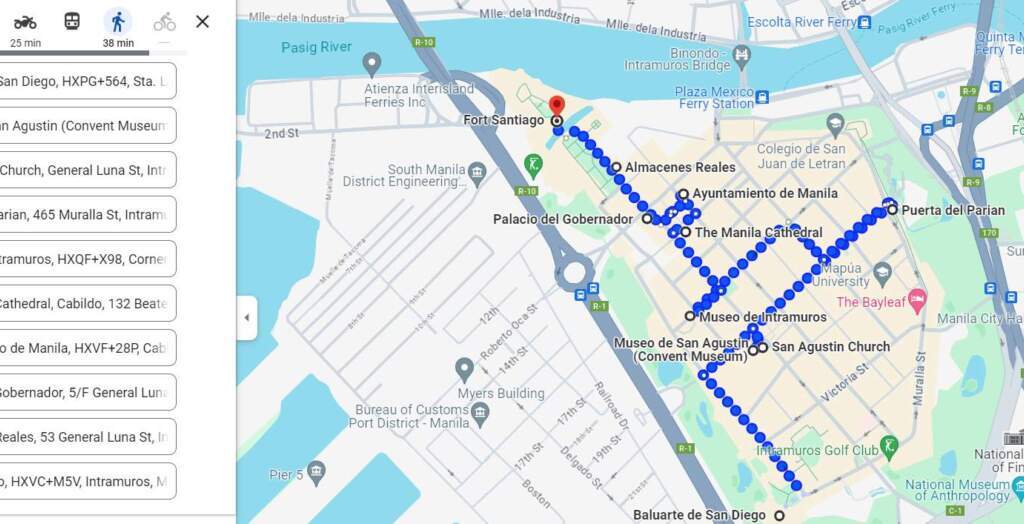
Welcome fellow adventurers! It’s your friendly neighborhood mom blogger April here from relaxlangmom.com. Today I have an activity that is a real “homerun” – a DIY tour of the historic Walled City here in Manila.
I’m sharing my top tips for a real longggggg! DIY tour through the historic walled city of Intramuros. Located right in the heart of the Philippine capital, Intramuros offers a step back in time without having to leave the bustling metropolis. But navigating its narrow streets and many attractions without a guided tour can seem intimidating. Fear not -I have carefully created curated itinerary for you and the kids to explore this UNESCO World Heritage Site on your own schedule.
Historical Highlights:
Before starting the tour, it’s essential to let your party (and kids!) know beforehand about the rich history of Intramuros. Let them imagine a giant walled city built hundreds of years ago by Spanish explorers! That’s exactly what Intramuros is – a super old town frozen in time. Established in 1571 by the Spanish conquistador and El Adelantado, and the grand old man Miguel López de Legazpi, Intramuros became the heart of Spanish rule in the Philippines for over 300 years. Picture enormous stone walls keeping the city safe, cobbled stones, grand churches with beautiful decorations, and important government buildings built in a fancy Spanish style. Intramuros is a treasure trove waiting to be explored.
Intramuros (which literally translates to “within walls”) is packed with fascinating history just waiting to be uncovered. Instead of just wandering aimlessly like “lost penguins” searching for a flu shot, I’m going to give you a step-by-step itinerary to make the most of your outing and feel like urbex experts by the end of the day!
Some of the coolest things to see are actually old buildings with brand new uses. Imagine stepping into a historic house that’s now a museum or a yummy restaurant! Even the old forts have been given a makeover, some now selling cool souvenirs or serving food outdoors.
Walking around Intramuros, you’ll see a mix of old and new buildings. Some were built after the 1970s, but they were designed to look just like the old Spanish-Chinese buildings that used to be there before the Americans came in 1898. It’s like a history lesson come to life!
Getting There:
For us local families, the trusted jeepney is probably the most colorful choice. Flag one down going along Rizal Avenue/Padre Burgos Street and alert the driver “Intramuros po!” You’ll enjoy views of the hustle and bustle out the open-air windows. Pro tip: offer the tita beside you some candy – jeepney karaoke is part of the fun!
If Metro traffic has you vexed, the speedier LRT Line 1 is another alternative. If you’re from Pasig, you can take the MRT Train then transfer to LRT 1 train, Manila’s light rail system. From MRT, board a southbound train heading towards Pasay and alight at Taft Station. From there, use the connecting bridge to get to LRT Alight at the Central Terminal station then follow the signs for a quick five minute walk. Along the way, keep eyes peeled for wacky street art – Manila never fails to surprise! At the overpass, duck through the tunnel into the sun-drenched plaza outside Manila City Hall. If you get off at the United Nations terminal instead, you will have to pass by Rizal Park which is not a bad thing if you haven’t been there yet. The walk will be a bit longer though.
Taxis and ride-hailing apps like Grab are also convenient options, especially if you’re traveling with luggage or a group.
The Intramuros Tour: A Journey Through Time
Baluarte de San Diego. Let’s start at the beginning – or rather, the outer edges. Your tour of Intramuros kicks off at Baluarte de San Diego, one of the last remaining bastions of the city’s 16th-century fortification. The original tower built in 1587 is called Nuestra Senora de Guia and is looking out to the southern bayside of Manila. Unfortunately, only the remnants of the tower itself are intact. Even at the time of its founding, it already suffered from cracks and was then demolished and integrated to a newly built fort which is the now Baluarte de San Diego.
From the ramparts itself, you will feel like Jon Snow looking out from the wall. Except it’s filled with buildings and roads with heavy traffic. Fortunately, up there, you can also take in sweeping views of verdantly green Luneta (formerly Bagumbayan) where the natives ended up after the Spanish invasion in 1571. Spy the Golf Park and Driving Range where the old moat surrounding the entire walled city was. The moat was filled with soil by the Americans to make the golf course. :/
You can hardly see the Manila Bay because of the buildings but this area was built as an important part of our colonial defense systems. Built in adobe, it was breached by the British in 1700s. Fun fact: Did you know “Baluarte” literally means bulwark or rampart? Consider this your scenic rampart warm-up before the real history lessons begin! There is an entrance fee of P75 pesos to be allowed to go up the walls. Don’t miss the Japanese canon on the way up. It’s a relic from the Japanese era when the Japanese came to invade the Philippines. Remind me, who didn’t come to invade the Philippines? Lol.
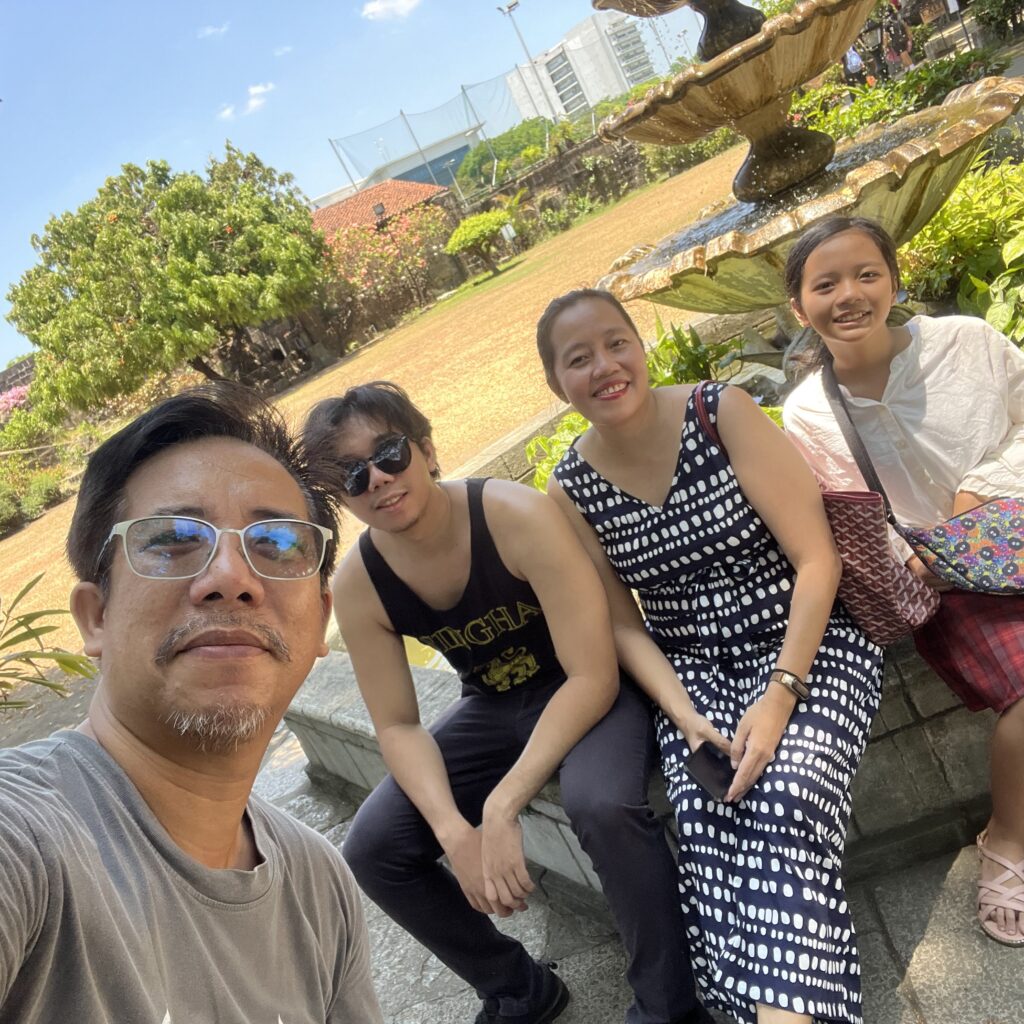
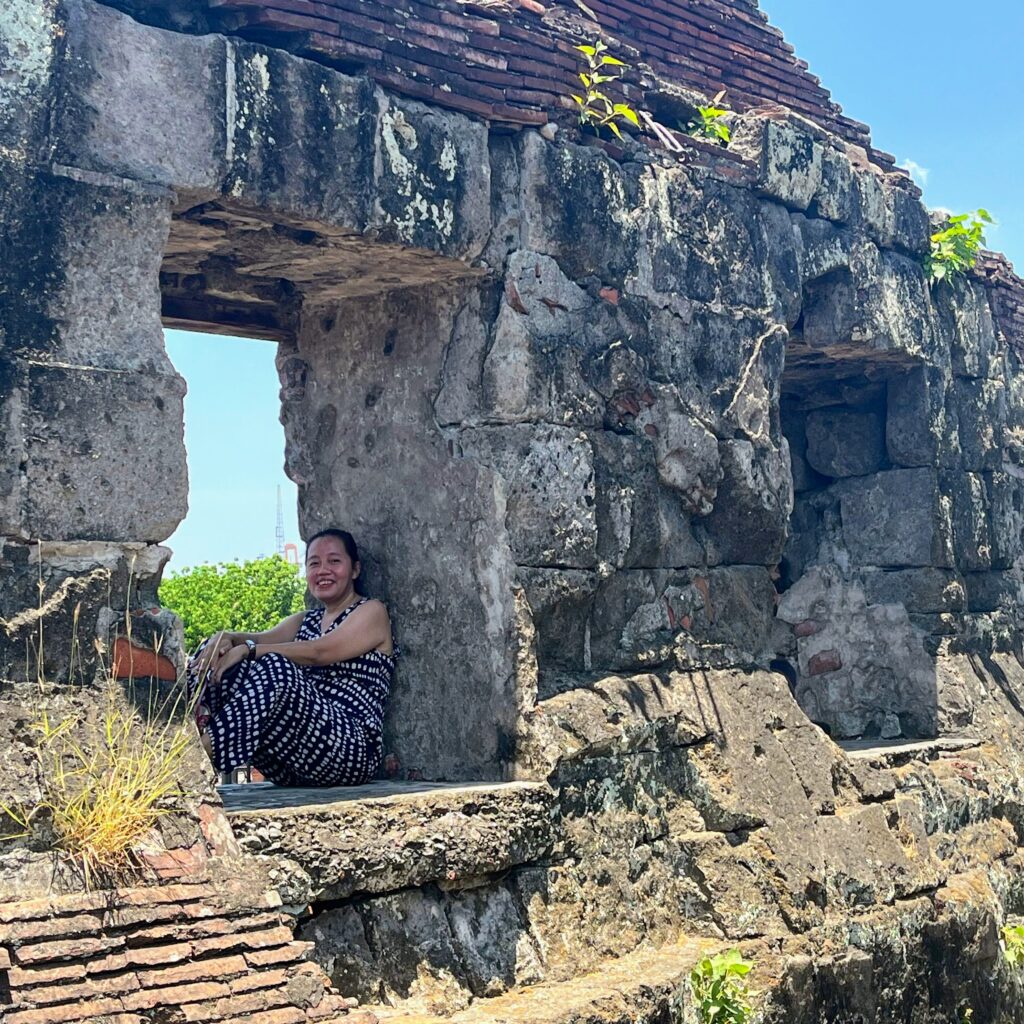
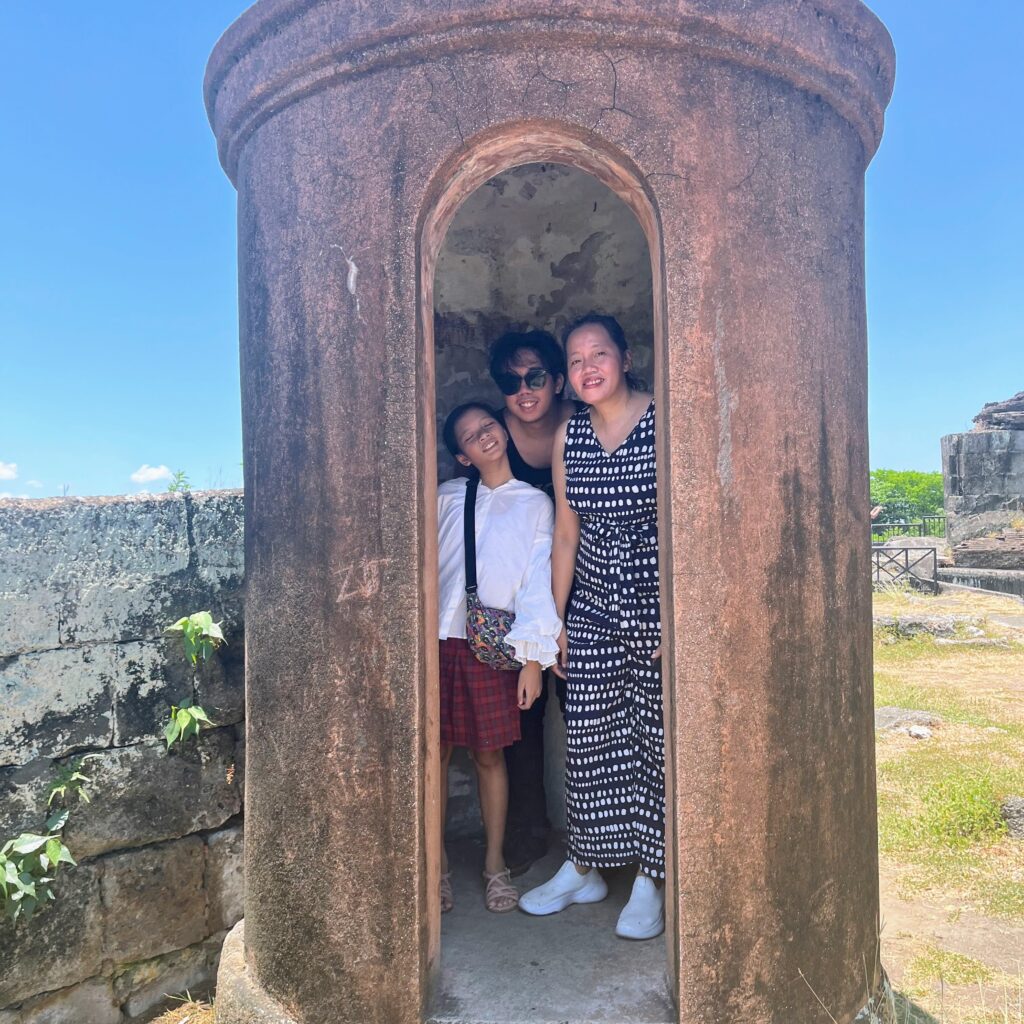
San Agustin Church. Following our prepared Google Maps itinerary, we walked to the plaza where the iconic San Agustin Church is. Its fading majesty is a snapshot into Manila’s colonial past. A masterpiece of Baroque architecture, San Agustin Church is the oldest church in the Philippines. Marvel at its intricate facade, ornate interiors, and beautifully preserved frescoes. Kids will enjoy spotting unique details like the trompe l’oeil paintings adorning the crucero. Consider saying a prayer for guidance as you navigate Intramuros – you never know what secrets its stony walls may reveal! Don’t miss the onsite museum (separate ticket) for a deeper historical dive.
Museo de San Agustin. Beside the church is the Museo de San Agustin, housed in the ornate Baroque church of the same name. You can wander through its hallowed halls to glimpse religious art, archaeological discoveries, and cultural artifacts chronicling Philippine-Spanish contact. Be sure to ogle the ornate altar and piping organ – musical prodigies will appreciate its inner workings. If mystery is more your style, check out rumors of a secret crypt under the sacristy. Spooooky!
Puerta del Parian. Just across the plaza is the Puerta del Parian, one of the original gates to the walled city. Merchants from China, Japan, India and beyond once passed through its towering archway to trade in the bustling Port Area beyond. This is called Puerta del Parian because this is the entrance near the “Parian” or market in Arroceros (near the Manila City Hall) where the Chinese sell their wares. They were originally forbidden to enter the fort. Ponder what tales these centuries-old stones could tell! For an immersive experience, check local performance schedules – traditional dances are sometimes staged here.
Lunch Break. Refuel your adventure at one of the food trucks now inhabiting the plaza or the many of Intramuros’ charming cafe and restaurants. Watch chefs whip up authentic Filipino fare as you chat about your finds so far. Don’t forget to sample leche flan or halo-halo for a sweet treat! We had our “baon” for lunch and took a break at plaza near the Manila Cathedral.
Manila Cathedral. At the plaza, you will perhaps be drawn to the the regal Manila Cathedral. The church’s construction first began in the 16th century, and its Baroque facade standing the test of time. Pay special attention to relics like the canon ball lodged in one of its pillars – a reminder that even places of worship were not spared from the region’s turbulent history. While there might not be documented paranormal occurrences or hidden chambers like some old buildings, Manila Cathedral does have some lesser-known facts that add to its intrigue.
The cathedral has survived numerous earthquakes, including the devastating 1645 Luzon quake. Its design, with thick adobe walls and buttresses, is said to be an eightfold earthquake-resistant structure. There have been rumors of a crypt beneath the cathedral, but its existence remains unconfirmed. Some historical accounts mention a crypt, while others don’t. Official excavations haven’t been conducted, so it remains a mystery. The cathedral supposedly became a refuge for Filipino resistance fighters during the Japanese occupation of World War II. There are whispers of hidden passages used to smuggle supplies or even people, but there’s no concrete evidence. While these aren’t exactly ghost stories, they add a layer of mystery to Manila Cathedral’s history. Perhaps future investigations might shed more light on these stories!
Ayuntamiento de Manila. Next up on the itinerary is Ayuntamiento de Manila, formerly the seat of Spanish colonial government. We were not able to go in but its ornate balconies and arched walkways evoke a bygone era of power and prestige. Imagine political dealings and social elites once flocking these grounds. For a history lesson with levity, check if local reenactors are performing – nothing drives facts home like a dramatization! There were a slew of kids in full Filipiniana garb making a historical video and for a moment, it felt like we were isekai’d and transported to the past.
Palacio del GObernador. Following their footsteps is the neighboring Palacio del Gobernador, residence of Manila’s highest appointed official during Spanish rule. Admire architectural flourishes like colored tilework and painted ceilings retaining hints of long-faded grandeur. Ponder what aristocratic affairs unfolded within these walls. An interactive exhibit brings the past to life for young minds.
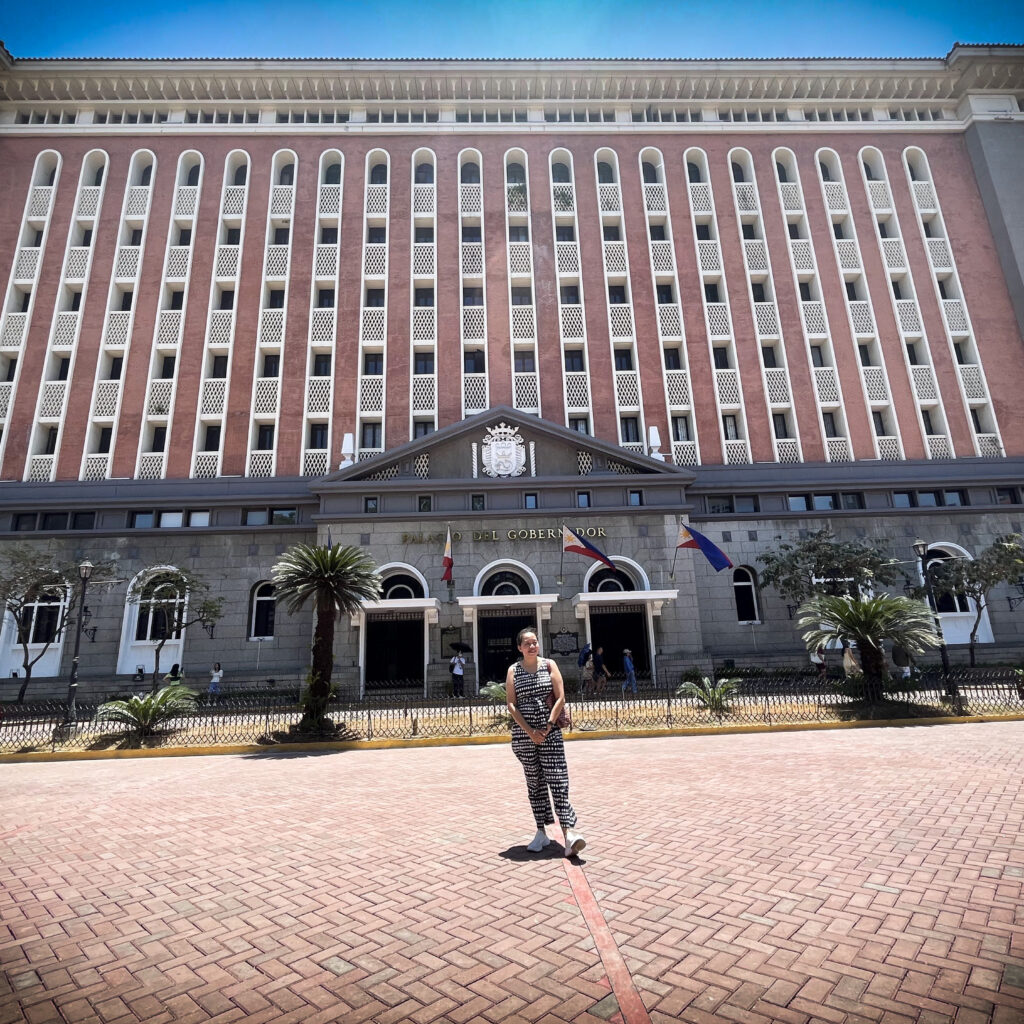
Museo de Intramuros. Then it’s on to the renovated Museo de Intramuros, with exhibits chronicling the area’s establishment, growth and changes over time. Artifacts include scale models of fortifications, colonial-era firearms, and pottery found during archaeological digs. Puzzle over recreations of daily life alongside resident scholars – this place is a treasure trove for curious minds.
Fort Santiago. No visit to Intramuros is complete without spotting its last remaining bastion, the mighty Fort Santiago. Fort Santiago stands at the old palisaded structure built by Rajah Matanda and Rajah Soliman and stands the orgiginal Manila settelement before the natives were driven to Bagumbayan. The original Fort Santiago was destroyed in 1574 during the Chinese attack led by Limahong and was rebuilt in 1589. Marvel at its sturdy walls and parapets guarding the entrance to historic Manila. Tour exhibits shedding light on its military role, then amble the battlements for panoramas of the surrounding moat and river. End on a fun note by trying the cannon demonstrations – kids will love the booming blasts!
Whew – what a jam-packed itinerary! By now you’ve surely worked up an appetite for more. Be sure to subscribe to my newsletter for future DIY travel tips to the Philippines and beyond. You can also find me on Instagram @relaxlangmom sharing photos from my wanderings. Until next time, keep exploring and making memories with your loved ones! Mabuhay!
Tips for Your DIY Tour:
- Wear comfortable shoes as you’ll be doing a lot of walking.
- Bring sunscreen and a hat, especially during the hot afternoon sun.
- Download a map of Intramuros or purchase one from the tourist information center.
- Most museums have entrance fees, so carry some cash. Some offer discounts for students, senior citizens, and people with disabilities.
- Wear proper attire if planning go inside churches -avoid sleeveless tops and shorts.
- Take advantage of the kalesas (horse-drawn carriages) or e-trikes for a leisurely ride around the walled city. The kalesa can accommodate 1 to 3 passengers on a 30-minute guided tour of Intramuros. There’s an official pricing of P1k for Kalesa trip and P200 for tricycle rides. The drivers are pretty knowledgeable and usually have a prepared itinerary as well.
- Intramuros comes alive at night, with some areas illuminated and offering a different atmosphere. Consider staying late for a unique experience.
A Final Note:
Intramuros is a treasure trove of history, culture, and architectural marvels. With this guide and your sense of adventure, you’re well on your way to crafting an unforgettable DIY tour through this captivating walled city. It was a bit long for walking so you can choose to rent wooden bicycles or ride the tricycles offerring tour services which I find is cheap enough for such a wonderful historical tour.
